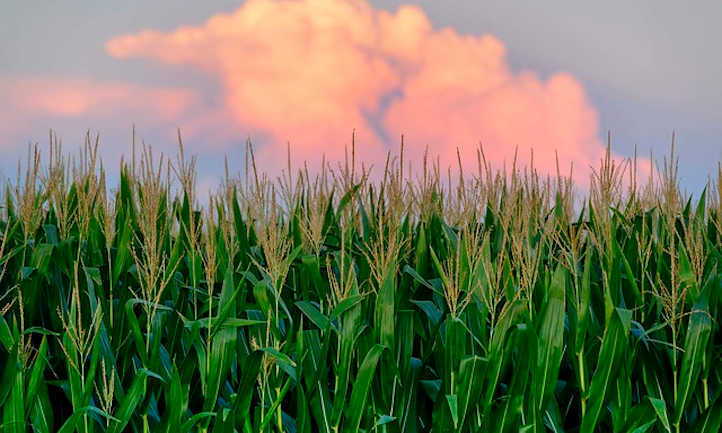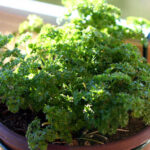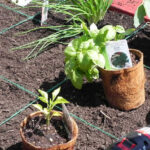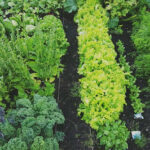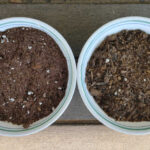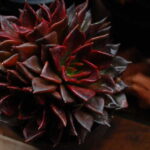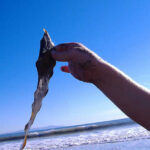If you ask any gardener, they’ll tell you that corn tastes so much better when it’s home-grown. Now, you could take our word for it, or you can find out for yourself! You’ll find that not only is it tasty, but growing corn is easy and extremely rewarding. It’s no wonder that this plant is one of the top grown crops in the world.
Corn can be found on every human-populated continent, where it’s grown mostly for animal and human consumption. It’s such a big industry that over 1 billion tons of corn are produced around the globe each year. One of the biggest reasons why this crop is so popular is that it can be genetically modified easily, so there are varieties that thrive in almost every location. This trait also makes it excellent for genetic and botanical research.
This crop is also as ancient as it is popular. Its close ancestors originated in prehistoric times. Corn itself was domesticated over 6000 years ago in Central and South America from Teosinte (a wild grass). Later, in the 1400s, Columbus introduced maize to Europe where it quickly spread to the rest of the world.
It’s no surprise then that the sweet corncobs we eat today have been modified by humans for thousands of years. What was once a simple grain is now the star of agriculture – and our gardens. We eat it raw or cooked. The kernels are ground into flour. It’s made into corn starch, bread, cereals, oil, syrup, and even coffee. Corn even has non-culinary uses such as medicine, cosmetics, biofuel, and many more.
As humble gardeners though, our purpose is to take this major food source and turn it into a simple, home-grown harvest. Learn how to grow sweet corn, and you’ll be joining cultivators all over the world in appreciating a truly magnificent crop.
Quick Care Guide
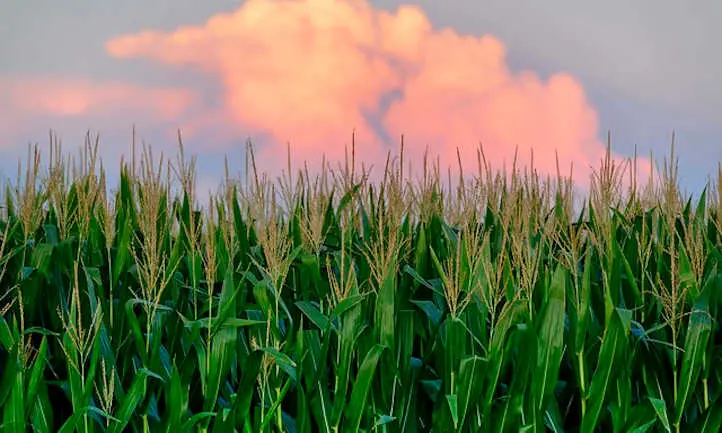
| Common Name(s) | Sweet corn, Maize |
| Scientific Name | Zea mays |
| Days to Harvest | 50-75 days |
| Light | Full sun |
| Water | Medium |
| Soil | Well-draining |
| Fertilizer | Multiple nitrogen applications |
| Pests | Corn earworm, European corn borer, armyworms |
| Diseases | Corn smut, anthracnose |
All About Sweet Corn
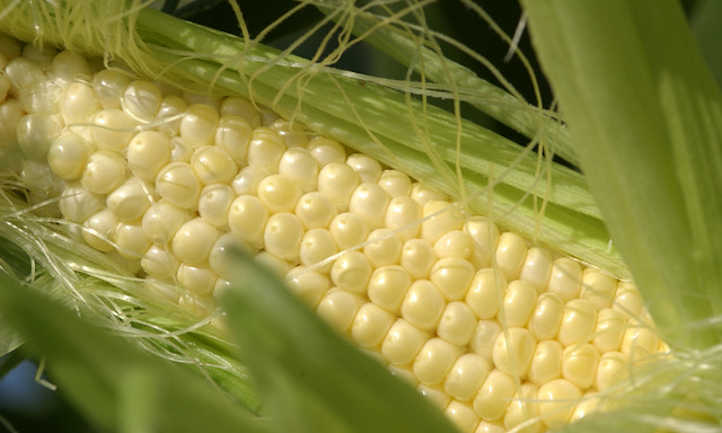
Before we go any further, let’s do a quick anatomical review. Corn grows on a bamboo-like stalk that can reach over 6 feet tall. The leaves are large and oblong, coming directly from the stalk. The plants are monoecious, meaning each plant has male and female organs but they’re on separate flowers. At the very top of the stalk, we have the tassel. This spiky, golden flower holds the pollen where it can be easily carried away by the wind. Below, at the end of each ear of corn is the female flower – the silk. These thin fibers carry the pollen down to the seeds on the cob, which then develop. So, when you bite into an ear of corn, you’re actually eating the seeds of the plant.
When it comes to corn, the whole vegetable/fruit debate is complicated. From a culinary perspective, corn has all the attributes of a vegetable. Botanically, it’s considered a fruit since the part we eat contains seeds. However, corn is ultimately a grain because it’s descended from grasses and is grown for its seeds, which are considered grains.
The moniker “maize” originates from the Taino word “mahiz”, meaning “bread of life”. This was changed to the Spanish term “maiz” after the Tainos were conquered by invaders from Spain. Today, “maiz” is considered the common name, though spelled “maize” in English. In fact, the United States is the only country that commonly refers to this crop as “corn”.
Despite its unique terminology, the US is the top sweetcorn growing country, followed by China and Brazil. Maize occupies over 80 million acres of US land and makes up 316,000 farms. Most of that land has been coined the “corn belt”, which encompasses North Dakota, Michigan, Kentucky, Kansas, and everywhere in between.
Corn Varieties
There are so many varieties of Zea mays that we can’t possibly discuss them all. To keep them ordered, they’ve all been sorted into several groups based on their characteristics. Here are the most popular ones that you’re bound to hear about in your corn-growing adventures.
Sweet corn is the group we’ll focus on in this article as it’s the most common choice for home gardens. It converts glucose to starch at a slower rate than other types, which gives it a super sweet taste. It’s also harvested immaturely before the starchiness settles in. Some varieties of sweet corn don’t cross-pollinate well with others, so you need to follow any companion-planting instructions on the seed packet. Some of our favorite varieties are Bodacious, Double Standard, Peaches and Cream, Festivity, and Silver Princess.
Popcorn is not only a fun snack, but it’s also a type of corn! It produces colorful, hard-skinned kernels, which are full of granulated starch. When heated, pressure builds inside the kernel until it “pops” with its inner starch. The starch is quickly crystallized, forming the puffy treat we love. If you want to give Popcorn a try, check out the Carousel, Strawberry, and Glass Gem varieties.
Flint corn, also called Indian corn, is often harvested for ornamental use due to its decorative grains. You can find it in a range of colors from deep burgundy to sunny yellow to greyish blue. However, in the commercial world, more attention is paid to the hardness of the grains, which makes it ideal for shipping. It’s typically used to produce oil, cereal, silage, and flour. If you’re looking for a rainbow of autumn decorations, try out the Candy Red, Wade’s Giant, and Hopi Blue.
Dent corn is the top commercial variety grown in the US, China, and Europe. Like flint corn, it’s mostly used for oil, cereal, silage, and flour. It’s been through quite a bit of hybridization that focused on developing unique starch traits. As for garden uses, you’ll find that Dent varieties have some pretty interesting colors and patterns. To see for yourself, check out the Earth Tones, Oaxacan Green, and Bloody Butcher varieties.
Planting Corn
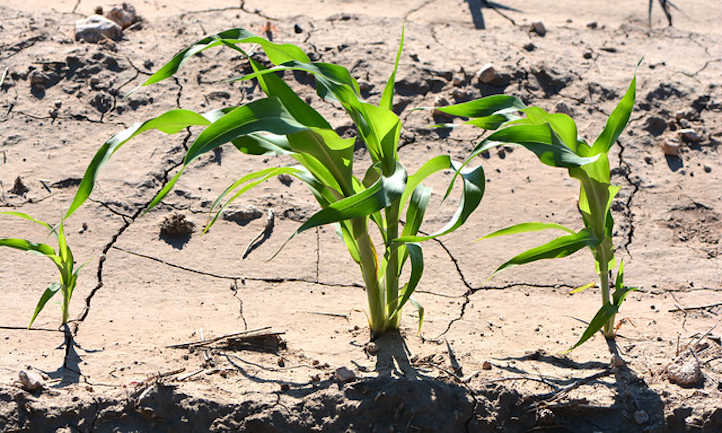
Before you start preparing a summer meal, we’ll go over how to plant corn. The most common practice is to plant corn from seeds. You can try finding some starts, but most garden stores don’t carry them because of how willingly corn seeds sprout. Because it isn’t cold hardy, wait until two weeks after the last frost. The soil needs to be at least 60°F for the seeds to grow properly.
You can start your seeds indoors so you have an earlier crop. If you plant corn in April, the in-ground sowing can usually be done in May, depending on your location. These are fast growers, so you don’t want to plant them too early indoors.
Each cornstalk only grows 1-3 ears of corn and they’re best when eaten right away. However, you can plan for a continuous harvest by staggering the planting. Most gardeners prefer planting a group of seeds every 2-3 weeks in the spring, resulting in multiple harvests throughout the summer. This works especially well if you use a combination of early, medium, and late varieties.
Choose a spot in the garden that’s in full sun and is exposed to some amount of wind for pollination. Corn stalks are pretty tall, so they’ll cast some shade. Keep this in mind when putting them next to other plants.
There’s a reason why corn plants are grown in rows, creating the archaic cornfield. Corn relies on wind pollination, which is easily done with at least a dozen stalks grouped together. Having multiple rows ensures that the pollen will reach another stalk no matter which direction the wind is blowing.
If you’re planning to try multiple varieties, keep them separated by at least 50 feet. Many varieties of corn don’t cross-pollinate well with each other, resulting in undeveloped kernels. You can further avoid this by planting each variety at least 14 days apart so they flower at different times.
Now that you’ve decided where and when to plant corn, sow each seed 1-2 inches deep and 2 – 4 inches apart. If the soil is very loose, try planting the seed 3 – 4 inches deep. With sweet corn spacing, each row should be 2 – 4 feet apart. When they’ve sprouted, which usually only takes 5 days or less, thin them to 8-12 inches apart. Since the fibrous, shallow roots are easily upset, cut off the unwanted corn plants at the stem instead of uprooting them.
Care
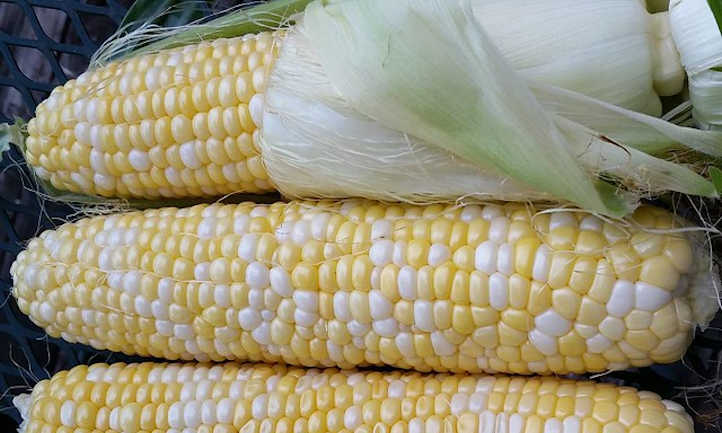
Now that they’re planted, you need to know how to grow corn. You shouldn’t have any problem getting the corn stalks to grow. What you do need to pay attention to though, is the grain development. Here’s what you need to do for the tastiest results.
Sun and Temperature
It’s said that on a hot day, you can sit down and watch the corn growing. Although it does grow fast in the heat, temperatures above 90°F can stunt the growth. The same thing can also happen in cold temperatures. To allow for optimal growth, the temperature should be between 65 and 90°F.
The required temperatures can be achieved in zones 2-11. As well as heat, give your corn plants full sun. The shucks may get a little sunburnt in high heat, but this usually doesn’t affect the grains since they’re well-protected.
Watering and Humidity
Maize needs plenty of water, especially while the kernels are growing. Keep the soil consistently moist, which may mean watering more frequently in hot weather. If your plants aren’t getting enough water, the stalk will quickly wilt. Catch this early on though and it should perk back up.
Avoid getting the stalk wet when you’re watering, as this can interfere with pollination. A good method is to use drip lines that provide a slow trickle of water for several hours 1-2 times a week.
Soil
You can grow corn in a variety of soil textures as long as they’re well-draining. The pH level should be between 5.5 and 7.0. It’s also very important that the soil has plenty of organic matter ready for the hungry plant. To best achieve this, add some compost the fall before planting so it has plenty of time to break down into the soil. At the latest, add in the compost one month before planting.
Fertilizing
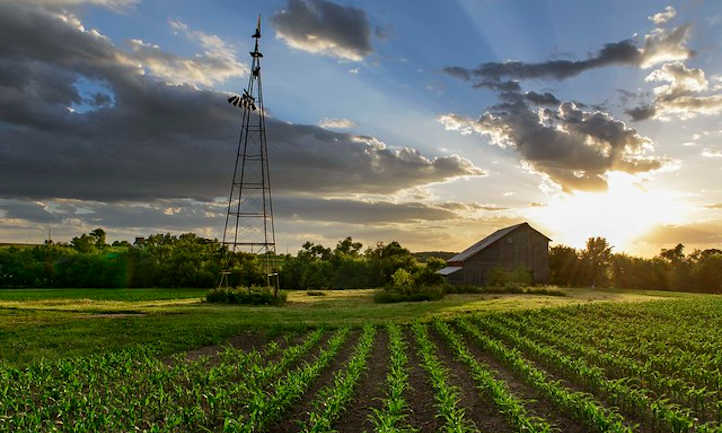
Corn plants are very heavy feeders when it comes to nitrogen. This macronutrient will make the stalks grow fast and green. You should apply nitrogen-heavy fertilizer to the soil at least twice a year. The first application should be added when the seedlings have 3-4 leaves or are about 6-12 inches tall. About 3 weeks later, add a second dose of fertilizer. Optionally, you can continue to fertilize as needed throughout the season.
A general rule for dosing – depending on the fertilizer – is one cup per 10 square feet. After applying, the fertilizer should be watered into the soil. Some good organic fertilizers that have lots of nitrogen are feather meal and blood meal. You’ll find that both have many amazing benefits for your corn plant and are easily purchased online.
Pruning
Maize doesn’t need to be pruned in the traditional sense of the word. Instead of manicuring a shape, we prune corn plants by cutting everything down at the end of the growing season. You can lop them off at the soil level and chop them up or do both by running them over with a heavy-duty mower. The botched remains can be left to decompose in the soil until next spring when you’ll till them into the soil.
If your corn stalks are infected with disease or an insect infestation, it’s better to cut down the stalks and destroy them at a different location. Otherwise, the infection has the potential to spread to next year’s crop.
Propagation
Corn grows so well from seeds that there isn’t a need to get creative with other propagation methods. If you’re looking to duplicate a friend’s plant, the best thing to do is ask for a mature cob that you can harvest seeds from. Make sure it’s an heirloom variety, as hybrids are usually sterile.
The cob should be left on the stalk until it has dried out. Remain watchful as it dries out, or insects may get to the kernels before you do. After you’ve picked it, remove the husk and keep the cob somewhere cool and dry for a few days so it can dry out further. When it’s dry enough, you’ll be able to remove the seeds by twisting the cob in your hands.
Store the seeds in a jar with a moisture absorber, or inside a paper envelope in a cool, dark place for the winter. They should be used the following spring for the highest chance of germination. If you plan to save your own seeds every year, do so from a large number of varieties. This gives variation to the gene pool so you’ll have a good crop year after year.
Harvesting and Storing
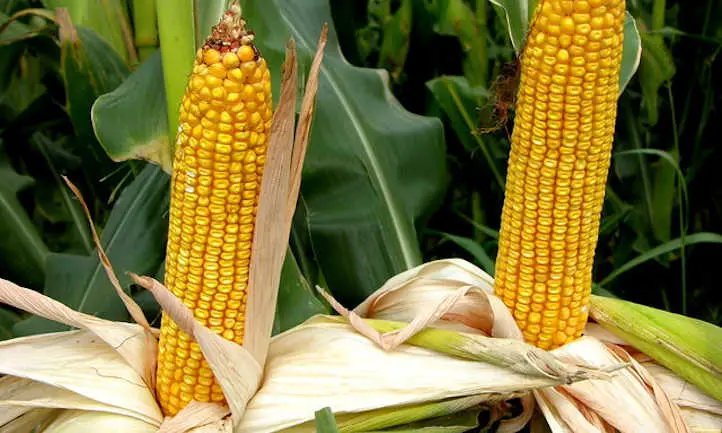
Harvesting your corn crop is just as easy as growing it – probably easier! However, there are some guidelines to follow, which we’ll cover below.
Harvesting
Knowing when to harvest corn is the first step. Depending on the variety and when you planted it, the harvest will be from mid-summer to fall. After the tassels grow, it usually takes about 3 weeks for the plants to produce harvest-ready corn. It’s recommended to harvest in the morning or evening for the best possible taste.
Sweet corn is best for eating when it’s still immature. Look for cobs that have a tight husk and feel full and solid. Further check its maturity by peeling back the husk and inspecting the kernels. They’ll be large, smooth, and have a milky fluid inside. The silks will be dark brown and starting to dry.
As the kernels age, they’ll start to appear wrinkly. You can still harvest and eat it at this stage, but you’ll get the best flavor with younger kernels. This is really a matter of personal preference though, so you’re in charge!
Once you’ve selected a tasty cob, snap it off the stalk by pulling it downwards. It should crack right off with a small bit of stem protruding from the bottom of the cob. This will be removed when you prepare it for eating.
Storing
From the second you pick a corncob, it starts to lose its sweetness. In just the first day after being picked, it loses half of its sugar – which is why it’s better homegrown than in the store. The best way to preserve this flavor is to pick it, shuck it, and immediately start cooking it.
Unless you have access to commercial machinery, you’ll be shucking the corn by hand. Simply remove all the husk layers, pull off the silks, and snap off any remains of the stem from the bottom of the cob. The silks can be difficult to completely remove without spending a long time plucking them one by one.
Cook corn by boiling it, grilling it, or even cooking it in the microwave. On cool summer nights, you can prepare hot coals in a fire pit, wrap the unshucked cob in foil, and cook it directly on the coals.
If you have to store your cobs for a bit, keep them in the refrigerator with the shucks on. They should be eaten within 1-2 days. You can also freeze corn, although the kernels will be somewhat mushy after thawing. Blanch it first and then freeze it whole or remove the kernels and freeze them. Keep your corn in an airtight container and it will be good for up to a year.
Troubleshooting
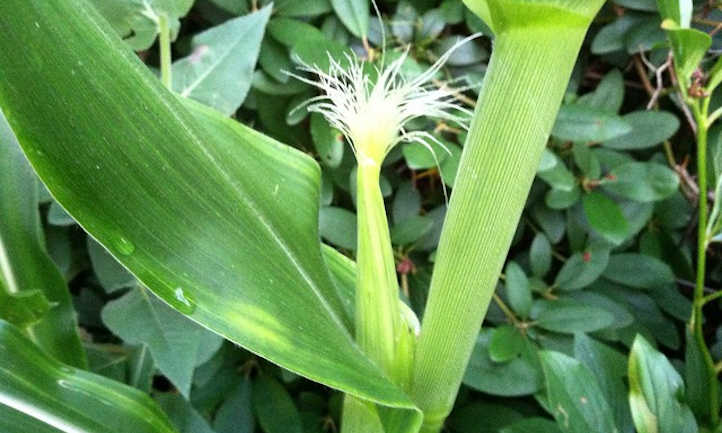
There are many disease and pest-resistant corn varieties, but you still need to be prepared for potential problems. Be on the lookout for the following issues.
Growing Problems
Toothy corn is a frustrating, yet preventable, problem. Each kernel is pollinated separately, so when pollination is inadequate, only some mature. To solve this, investigate the formation of your corn stalks. Are they too close together? Too far apart? Is something blocking all the wind? Ensure that you’re planting in a square or rectangle so the pollen will land on a stalk no matter where it blows.
Cats and raccoons have a sweet-tooth for sweet corn. They’ll pull down and eat the cobs, often breaking the whole stalk in the process. There are several methods to keep these cute but destructive animals out of your corn, most of which are short-term and should be used in rotation — this includes applying things like predator urine, coffee grounds, or blood meal. Planting squash or other prickly-vined plants around the base of your corn also works, as animals don’t like getting poked by the vines. But what’s most effective is motion-activated sprinklers, as no animals like to get sprayed.
Magnesium deficiency shows up as yellow, interveinal streaks in older leaves (chlorosis). As the condition worsens, the leaves are tinged with reddish-purple and are necrotic on the edges. This may cause a lack of uniformity in growth or decrease yield. Have your soil tested to be sure this is the problem before you treat, and that this isn’t a pest-caused issue. If it legitimately is a magnesium deficiency per your soil test results, check your fertilizer to make sure it contains some magnesium. If not, consider switching to a different fertilizer blend that does.
Pests
Corn earworms are moth larvae that pose the biggest threat to US sweet corn crops. They enter the corn plants through the silks and feed on the kernels. Once established, these pests cannot be eliminated from the stalk. You can prevent infestations by planting early-season varieties since the larvae eggs aren’t laid until later. For further prevention, spray an organic insecticide on the silks and top part of each cob when the silks are just beginning to form. Repeat this every 3-5 days until the silks turn brown.
Another dangerous pest, the European corn borer, enters through the stalk and feeds on plant tissue, the tassel, and pretty much everything else. The stalk may break at the point of entry and become susceptible to disease. Applications of a liquid insecticide just before and during tassel growth should keep the borers at bay. Corn borers overwinter in the stalks, so make sure you destroy or mow them down well.
Armyworms are yet another moth larvae that are just as destructive as they sound. They feed in large groups, moving from one corn stalk to the next. BT spray is an excellent way to eliminate these pests. One of the best ways to prevent them though is to invite beneficial predators to your garden. Ladybugs, lacewings, beneficial nematodes, and even parasitic wasps will feed on or otherwise demolish armyworm populations.
Diseases
Corn smut is a fungus-caused disease that starts as light-colored galls, which expand and darken. Eventually, they explode, releasing hundreds of spores that travel to other plants. Although most gardeners view this as a complete loss of the crop, some cultures eat the corn smut as a delicacy. If you see any galls, remove them immediately before they rupture. The fungus enters at wounds on the plant, so keep damaging insects, animals, and materials away. Because the fungus overwinters in the soil, completely destroy the stalks in the fall and rotate your crops.
Anthracnose is a fungus that can lead to leaf blight and/or stalk rot. It shows up as long, tan spots on the leaves and stalk that are outlined in brown. It can cause rot but is seldom fatal. To keep this fungus under control, use resistant varieties whenever possible. It overwinters in the soil, so destroy infected corn plants instead of tilling them in and practice crop rotation.
Frequently Asked Questions
Q: Is corn hard to grow?
A: No, but it does have some requirements to be met. As long as you pay attention to placement, watering, and pest control, growing sweet corn plants will be very easy.
Q: Does corn grow back every year?
A: No, it’s an annual that needs to be replaced each year.
Q: How much corn do you get from one plant?
A: One stalk usually produces 1-2 ears.

